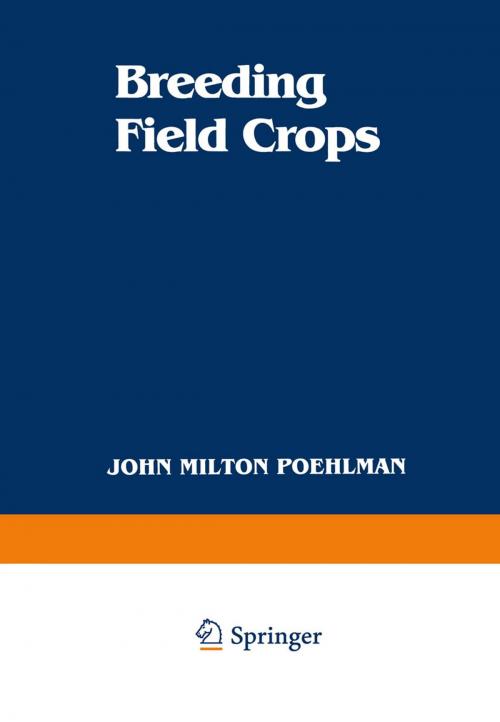Breeding Field Crops
Kids, Natural World, Nonfiction, Reference & Language, Education & Teaching, Science & Nature, Science| Author: | John M. Poehlman | ISBN: | 9789401572712 |
| Publisher: | Springer Netherlands | Publication: | April 17, 2013 |
| Imprint: | Springer | Language: | English |
| Author: | John M. Poehlman |
| ISBN: | 9789401572712 |
| Publisher: | Springer Netherlands |
| Publication: | April 17, 2013 |
| Imprint: | Springer |
| Language: | English |
While preparing the first edition of this textbook I attended an extension short course on writing agricultural publications. The message I remember was "select your audience and write to it. " There has never been any doubt about the audience for which this textbook was written, the introductory course in crop breeding. In addition, it has become a widely used reference for the graduate plant-breeding student and the practicing plant breeder. In its prepa ration, particular attention has been given to advances in plant-breeding theo ry and their utility in plant-breeding practice. The blend of the theoretical with the practical has set this book apart from other plant-breeding textbooks. The basic structure and the objectives of the earlier editions remain un changed. These objectives are (1) to review essential features of plant re production, Mendelian genetic principles, and related genetic developments applicable in plant-breeding practice; (2) to describe and evaluate established and new plant-breeding procedures and techniques, and (3) to discuss plant breeding objectives with emphasis on the importance of proper choice of objec tive for achieving success in variety development. Because plant-breeding activities are normally organized around specific crops, there are chapters describing breeding procedures and objectives for the major crop plants; the crops were chosen for their economic importance or diversity in breeding sys tems. These chapters provide a broad overview of the kinds of problems with which the breeder must cope.
While preparing the first edition of this textbook I attended an extension short course on writing agricultural publications. The message I remember was "select your audience and write to it. " There has never been any doubt about the audience for which this textbook was written, the introductory course in crop breeding. In addition, it has become a widely used reference for the graduate plant-breeding student and the practicing plant breeder. In its prepa ration, particular attention has been given to advances in plant-breeding theo ry and their utility in plant-breeding practice. The blend of the theoretical with the practical has set this book apart from other plant-breeding textbooks. The basic structure and the objectives of the earlier editions remain un changed. These objectives are (1) to review essential features of plant re production, Mendelian genetic principles, and related genetic developments applicable in plant-breeding practice; (2) to describe and evaluate established and new plant-breeding procedures and techniques, and (3) to discuss plant breeding objectives with emphasis on the importance of proper choice of objec tive for achieving success in variety development. Because plant-breeding activities are normally organized around specific crops, there are chapters describing breeding procedures and objectives for the major crop plants; the crops were chosen for their economic importance or diversity in breeding sys tems. These chapters provide a broad overview of the kinds of problems with which the breeder must cope.















